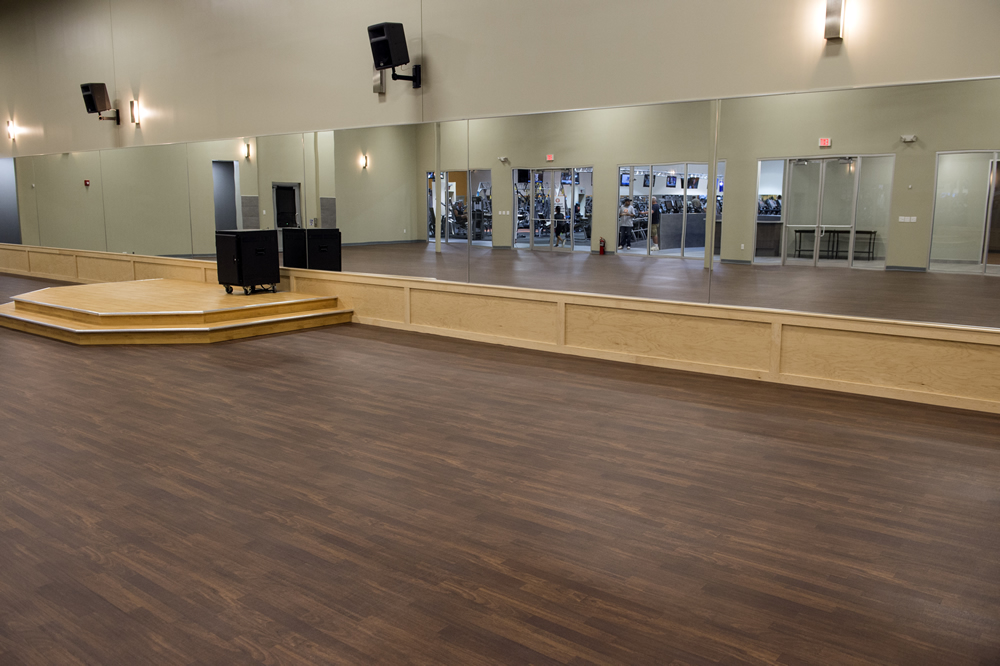1. How to Fix a Bouncy Living Room Floor
If you've ever experienced the frustration of walking across a bouncy living room floor, you know how annoying and even potentially dangerous it can be. A bouncy floor can be caused by a variety of factors, but the good news is that it can often be fixed with the right approach.
If you're wondering how to fix a bouncy living room floor, you've come to the right place. In this article, we'll discuss the different causes of a bouncy floor and provide solutions and tips for preventing it from happening in the future.
2. Causes of a Bouncy Living Room Floor
There are several potential causes of a bouncy living room floor. One of the most common reasons is poor construction or inadequate support. If the floor joists were not properly installed or are spaced too far apart, the floor may not be able to support the weight of furniture and foot traffic, leading to a bouncy feeling.
Another possible cause is water damage. If there is a leak in the floor or the surrounding walls, it can weaken the floor joists and cause them to warp or rot, resulting in a bouncy floor. In some cases, a bouncy floor can also be caused by settling of the foundation or structural damage to the house.
3. Solutions for a Bouncy Living Room Floor
The solution for a bouncy living room floor will depend on the cause. If the issue is poor construction, you may need to reinforce the floor joists or add additional support beams. If the problem is water damage, you will need to repair the source of the leak and replace any damaged materials.
In some cases, it may be necessary to replace the entire floor. This is typically a last resort, but if the damage is extensive and cannot be fixed with other methods, it may be the only option.
4. Tips for Preventing a Bouncy Living Room Floor
Prevention is always better than a cure, so it's important to take steps to prevent a bouncy living room floor from happening in the first place. One of the best ways to do this is to ensure that the floor is properly constructed and supported from the beginning.
If you're building a new home or renovating your living room, make sure to work with a reputable contractor who has experience in constructing sturdy floors. It's also important to avoid overloading the floor with heavy furniture or too many people.
5. Signs of a Bouncy Living Room Floor
If you're not sure whether your living room floor is bouncy, there are a few signs you can look out for. The most obvious sign is a noticeable bounce or give when you walk across the floor. You may also notice creaking noises or gaps between the floorboards.
In severe cases, you may even see visible sagging or bowing of the floor. If you notice any of these signs, it's important to address the issue as soon as possible to prevent further damage and potential safety hazards.
6. Common Materials for Bouncy Living Room Floors
There are several common materials used for living room floors that may be more prone to becoming bouncy. These include hardwood, laminate, and vinyl flooring. While these materials can be durable and attractive, they may not provide enough support for heavy furniture or high foot traffic.
If you have one of these flooring materials in your living room, it's important to take extra precautions to prevent a bouncy floor from occurring. This may include adding additional support beams or choosing furniture that is not too heavy.
7. Professional Services for Fixing a Bouncy Living Room Floor
If you're not comfortable tackling the issue on your own, you can always hire a professional to fix your bouncy living room floor. A contractor or structural engineer will be able to assess the problem and determine the best course of action to fix it.
They may use techniques such as adding support beams, installing new joists, or using jacks to lift and level the floor. While this option may be more expensive, it can ensure that the issue is properly addressed and prevent further problems in the future.
8. DIY Methods for Fixing a Bouncy Living Room Floor
If you're handy and have some experience with home renovations, you may be able to fix your bouncy living room floor on your own. This will require some research and possibly the use of specialized tools, but it can save you money and give you a sense of accomplishment.
Some common DIY methods for fixing a bouncy floor include adding additional support beams, sistering new joists to the existing ones, or using shims to level out the floor. However, it's important to proceed with caution and consult with a professional if you're not confident in your abilities.
9. How to Determine the Cause of a Bouncy Living Room Floor
If you're not sure why your living room floor is bouncy, you may need to do some detective work to determine the root cause. This may involve inspecting the floor and surrounding areas for signs of damage, checking for leaks or structural issues, and consulting with a professional to get their expert opinion.
Once you've identified the cause, you can then choose the appropriate method for fixing it and preventing future problems.
10. Benefits of Fixing a Bouncy Living Room Floor
While it may seem like a minor issue, fixing a bouncy living room floor can have several benefits. Not only will it make your living space more comfortable and safe, but it can also prevent further damage to your home's structure.
In addition, fixing a bouncy floor can improve the value of your home and make it more attractive to potential buyers. It's a worthwhile investment that can pay off in the long run.
Bouncy Living Room Floor: Adding a Playful Touch to Your Home Design

The Importance of a Well-Designed Living Room
 The living room is often considered the heart of a home, a place where family and friends gather to relax, watch TV, and spend quality time together. As such, it's important to create a space that is both functional and inviting. When designing a living room, furniture, decor, and color schemes are usually the main focus. However, one often overlooked element that can make a big impact on the overall design is the type of flooring used.
A bouncy living room floor
may sound unconventional, but it can add a playful touch to your home design that is both unique and functional.
The living room is often considered the heart of a home, a place where family and friends gather to relax, watch TV, and spend quality time together. As such, it's important to create a space that is both functional and inviting. When designing a living room, furniture, decor, and color schemes are usually the main focus. However, one often overlooked element that can make a big impact on the overall design is the type of flooring used.
A bouncy living room floor
may sound unconventional, but it can add a playful touch to your home design that is both unique and functional.
The Benefits of a Bouncy Living Room Floor
 A
bouncy living room floor
is not just a novelty feature, it also offers several practical benefits. One of the main advantages is its shock-absorbing properties. This type of flooring is typically made from rubber or foam, which provides a cushioned surface that is gentle on joints and reduces the risk of injury from falls. This makes it an ideal choice for families with young children or elderly individuals. Additionally, the bouncy surface can improve circulation and reduce fatigue, making it a great option for those who spend a lot of time standing in the living room.
A
bouncy living room floor
is not just a novelty feature, it also offers several practical benefits. One of the main advantages is its shock-absorbing properties. This type of flooring is typically made from rubber or foam, which provides a cushioned surface that is gentle on joints and reduces the risk of injury from falls. This makes it an ideal choice for families with young children or elderly individuals. Additionally, the bouncy surface can improve circulation and reduce fatigue, making it a great option for those who spend a lot of time standing in the living room.
Design Options for a Bouncy Living Room Floor
 When it comes to design options, a
bouncy living room floor
offers endless possibilities. It can be installed as a solid color or in a pattern, such as a checkerboard or geometric design. The material can also be customized to match your preferred color scheme, making it a versatile choice for any home design. Additionally, the bouncy surface can add a playful and whimsical touch to the room, making it a perfect fit for a child's play area or a home gym.
When it comes to design options, a
bouncy living room floor
offers endless possibilities. It can be installed as a solid color or in a pattern, such as a checkerboard or geometric design. The material can also be customized to match your preferred color scheme, making it a versatile choice for any home design. Additionally, the bouncy surface can add a playful and whimsical touch to the room, making it a perfect fit for a child's play area or a home gym.
Considerations for Installation and Maintenance
 Before deciding on a
bouncy living room floor
, it's important to consider the installation process and maintenance requirements. This type of flooring typically requires professional installation to ensure proper installation and maximize its benefits. It's also important to regularly clean and maintain the floor to prevent any build-up of dirt or debris that could affect its bounciness. However, with proper care and maintenance, a bouncy living room floor can last for years to come and continue to add a unique touch to your home design.
In conclusion, a
bouncy living room floor
may not be the first thing that comes to mind when designing a living room, but it can be a fun and functional addition to any home. Its shock-absorbing properties, endless design options, and unique touch make it a great choice for families and individuals looking to add a playful touch to their home design. Consider incorporating a bouncy living room floor into your next home renovation project and see the impact it can make.
Before deciding on a
bouncy living room floor
, it's important to consider the installation process and maintenance requirements. This type of flooring typically requires professional installation to ensure proper installation and maximize its benefits. It's also important to regularly clean and maintain the floor to prevent any build-up of dirt or debris that could affect its bounciness. However, with proper care and maintenance, a bouncy living room floor can last for years to come and continue to add a unique touch to your home design.
In conclusion, a
bouncy living room floor
may not be the first thing that comes to mind when designing a living room, but it can be a fun and functional addition to any home. Its shock-absorbing properties, endless design options, and unique touch make it a great choice for families and individuals looking to add a playful touch to their home design. Consider incorporating a bouncy living room floor into your next home renovation project and see the impact it can make.






















































/new-floor-installation-185270632-582b722c3df78c6f6af0a8ab.jpg)




























